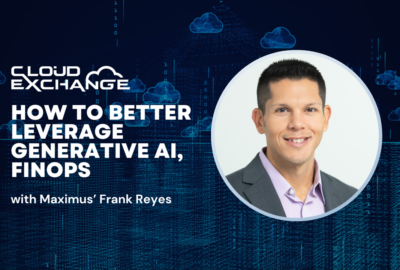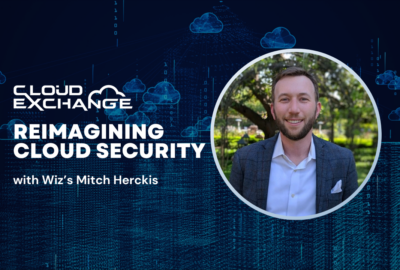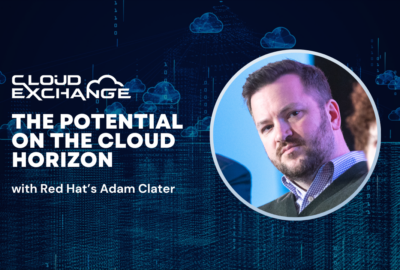Cloud Exchange 2024: GSA’s Adam Grandt-Nesher, USDA’s Arianne Gallagher-Welcher on future of federal digital services
Modernization and technical transformation weave together cloud, data management and customer experience, say GSA and USDA digital services leaders.
No one explicitly planned it, but the next generation of federal digital services depends heavily on the adoption of commercial cloud computing. Digital services require modernization of applications, supporting infrastructure and, typically, multiple data sources. That makes them a natural to go hand in hand with cloud technology.
Two panelists at Federal News Network’s Cloud Exchange 2024 outlined this idea in detail.
Adam Grandt-Nesher, managing director of the Cloud Adoption and Infrastructure Optimization for Center of Excellence at the General Services Administration, put it this way: “We’ve gotten to the point where most agencies that we work with have already-established, well-governed, reasonably well-managed digital services frameworks,” Grandt-Nesher said. Therefore, “you can start focusing on specific workloads and transition into the cloud.”
Agencies aren’t necessarily retiring legacy systems that continue to support loans, grants, payments and other basic transactional services. Whether refactored for cloud hosting or remaining on agency data center mainframes, such applications remain necessary to the latest digital services.
For example, the Agriculture Department focuses on interconnecting modern, user-facing front-end systems in the cloud with its legacy systems in its data centers.
“There’s a really big push for that interconnectedness between the front end — what members of the public seeing and how they are navigating — with the back end,” said Arianne Gallagher-Welcher, executive director of USDA Digital Service.
She aims to “make sure, from A to Z, the whole way the system works from end to end provides that design outcome that you’re looking for, for a particular user.”
Gallagher-Welcher said that at USDA, some people focus on the user experience while others focus on back-end systems.
“Data centers, they still have a value. They still have use, especially when folks are being intentional about what a modernization journey looks like. That’s not just flipping a switch, and all the data centers are gone,” she said. “With a lot of transitions to the cloud, I’ve seen that agencies are looking at how you can bring that together into one seamless experience.”
Plus, when adding cloud hosting, USDA pays attention to how data moves from one service to another so that it can maintain security, privacy and archiving requirements, Gallagher-Welcher said.
For seamless digital services, liberate the data
Digital services require data sharing and mobility in ways that traditional applications typically do not.
“To facilitate any of that communication or digitization of services that currently exists online, the first and foremost thing that an agency has to do is what we refer to as ‘liberate the data,’ “ Grandt-Nesher said.
Because data tends to be so widely distributed, “we have to either transition that into a shared space or build a mechanism to allow access to that data from any edge points in one of those multiple front doors,” he said.
For a department with as many distinct programs as USDA, the digital services challenge becomes about making its programs easily navigable from a customer standpoint.
“It’s really hard for the public to navigate and know exactly which place they need to go to get the answer they need,” Gallagher-Welcher said.
This means the public-facing component of an organization’s digital services must present a “no wrong door” experience, both she and Grandt-Nesher advised. That’s where human-centered design and journey mapping techniques come in. At the back end, the agency must rework processes to integrate data silos and share services.
It’s also where the cloud comes in. In fact, GSA helped USDA with an initial front door effort.
“One of our earlier projects was the ‘Ask USDA’ framework,” Grandt-Nesher said.
Ensuring customer-centricity defined the effort, he said.
“Especially since the CX executive order, when we arrive at an agency, our customer experience center defines what we’re there to do,” he said. “Everything that we do starts and ends with the customer’s experience. Technology, both on the data side and the infrastructure platform development side, serves to facilitate that transition.”
Beyond providing answers, USDA wants to improve access to its numerous, specific loan and other farm support programs. Gallagher-Welcher said USDA’s Chief Information Officer Gary Washington has charged the department’s tech staff with making access to services as easy as using an ATM.
That effort hinges on several strategies.
Fundamentally, she said, the mission areas are looking at how they can modernize business processes. The chief data officer is also USDA’s accountable official for artificial intelligence. That office, Gallagher-Welcher said, “is working really hard across the department to identify a number of use cases to test out using AI to see if that technology helps streamline some of those business processes.”
Another strategy component seeks to find ways to share products and technologies among programs to speed up modernization and avoid duplicative spending or work.
For instance, USDA’s Digital Infrastructure Services Center (DISC) “helps all of our mission areas and agencies access enterprise-level agreements for cloud, software as a service and other products so that we’re leveraging the buying power of USDA and also sharing and leveraging successes,” Gallagher-Welcher said.
Programs trying to modernize their services use DISC’s “Rolodex of solutions that could be deployed to help meet that need,” she said.
A third strategy component aims to ensure various missions and program officers learn from one another. It involves discussions at the department level, and even with congressional appropriators, to discover “those different types of mechanisms that we can leverage that really help incentivize and drive that collaboration upfront,” she said.
The idea is to use funding and shared enterprise services to make collaboration a regular part of the DNA of modernization throughout the department.
Making digital services viable for federal use
Managers and their staffs may understand their programs but perhaps not all of the nuances of the cloud. GSA has a cloud maturity and skills assessment capability to help with that, Grandt-Nesher said. He described it as a “library of solutions that are proven to work and proven to drive success in the federal government.”
The Technology Transformation Service, in which Grandt-Nesher’s center lives, also can take on the tricky acquisition of cloud services for client agencies if needed, he said.
He named cloud-hosted data services among those that can help with back-end integration for multiple applications. The agency still must determine which tier a given set of data must lie in, then use cloud services to get away from the need to buy and manage data hardware.
“Utilizing cloud services, you have high-availability, high-frequency access data sitting in equivalent to in memory storage versus low storage or deep storage data that is accessed rarely,” Grandt-Nesher said. That tactic lets agencies “then push it out into the world in a nice, governed fashion” based on access rights and privacy policies.
“This is, from an engineering perspective, one of the most technically complex challenges and has been well resolved in some cases,” he added.
Delivering services digitally to constituents has elements in common with, but is not totally analogous to, the private sector. Federal programs have requirements and rules unique to dealing with citizens and using taxpayer dollars.
Still, USDA “hears from our demand signals from the public that they want to be able to access services online,” Gallagher-Welcher said. “They don’t want to necessarily go to one of our 4,500 county offices to get some of the guidance and expertise they need.”
USDA officials believe that by streamlining and automating 75% of the basic transactions and services, they can free up staff to focus on exceptions and complicated cases.
Plus, modernizing applications for digital delivery affects the other channels by which constituents deal with agencies by ensuring people responding to phone calls or chat queries have the same data that’s powering the digital service.
Because in the end, Grandt-Nesher said, picking up the phone or going online “are actually the same process.”
Discover more articles and videos now on Federal News Network’s Cloud Exchange 2024 event page.
Copyright © 2025 Federal News Network. All rights reserved. This website is not intended for users located within the European Economic Area.
Tom Temin is host of the Federal Drive and has been providing insight on federal technology and management issues for more than 30 years.
Follow @tteminWFED






